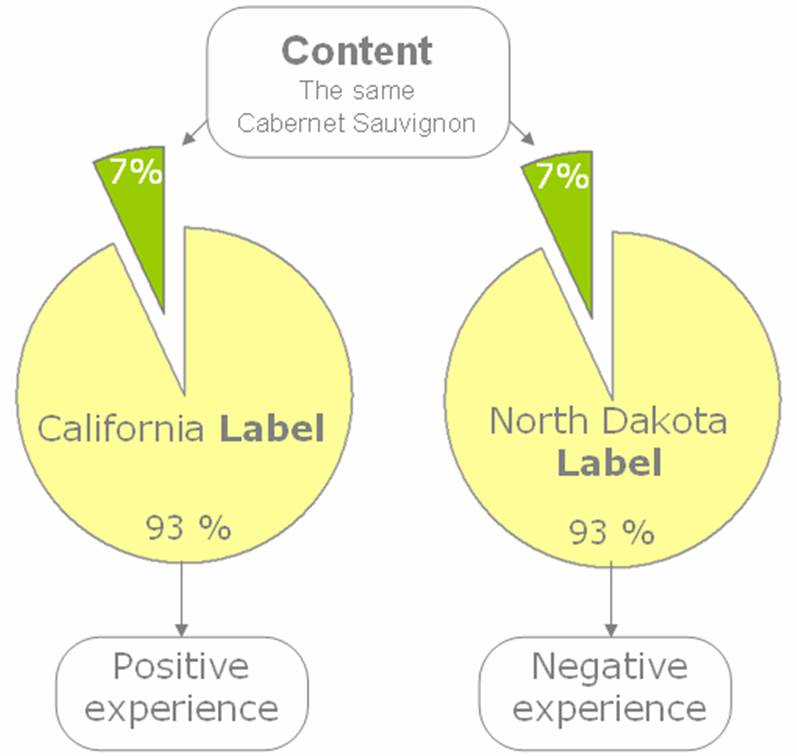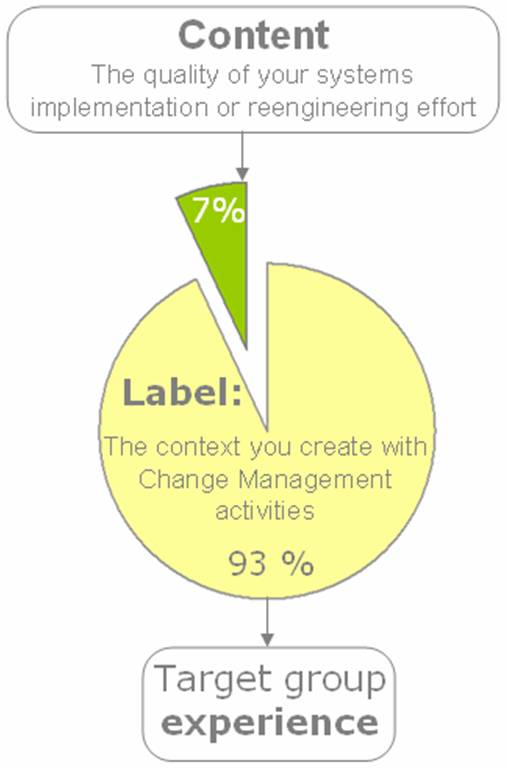In his 2007 book Mindless Eating, Cornell Professor Brian Wansink reports that changing the label on a wine changes diners’ opinions of their wine, opinions of their meal, and their complete dining experience that night.
Forty-one diners at the Spice Box restaurant in Urbana, Illinois were given a free glass of Cabernet Sauvignon to accompany a $24 prix-fix French meal. Half the bottles claimed to be from Noah’s Winery in California. The labels on the other half claimed to be from Noah’s Winery in North Dakota. In both cases, the wine was an inexpensive Charles Shaw wine.
Those drinking what they thought was California wine, rated the wine and food as tasting better, and ate 11% more of their food. They were also more likely to make return reservations.
Accoring to Wansink it comes down to expectations and his findings are aligned with another set of studies that were conducted about 36 years ago. These studies have consistently shown that people’s impressions are based far more upon how information is conveyed rather than the content itself. For instance, the study by Mehrabian in 1972 shows that the impact of a communication is only for 7% purely the content, for 55% body language, colors, layout, smiles and visual stuff, and for 38% how we speak, language, vocabulary, tone of voice etc.
This means that our perception accounts for 93% of the impact (provided that the 7% content is to the point and correct). In terms of Wansink’s dining experiment: the content of his bottles impacted only 7 % of the perception. In the drawing below I have blended both insights to depict the impact of the wine label on the dining experience.

As Wansink asserts: Once they were given a free glass of "California" wine, they said to themselves: “This is going to be good." Once they concluded it was going to be good, their experience lined up to confirm their expectations. They no longer had to stop and think about whether the food and wine were really as good as they thought. They had already decided. This mechanism is also known as ‘cognitive dissonance’ or ‘overjustification’ and it is hard-coded into the human mind.
Of course I would not be writing about these findings if I wouldn’t attach my own ‘far fetched’ analysis on organizational change management. Well, here it is and it comes with a big disclaimer: In the same way as the label of a wine bottle can impact the dining experience, to the same extent – that is approximately 93% – your change management efforts can influence the experience of your systems implementation (be it SAP or any other ERP platform) or reengineering effort. This is depicted in the drawing below: the impact of change management on the experience of your target audience.

The disclaimer – of course – resides in the fact that good change management does not compensate a bad implementation or bugged ERP software. The content has got to be right, although it will only positively impact the user experience for 7%.
Conversely, if the content is not good (corked wine or a bugged ERP software for that matter) there is no way a nice label or good change management practices can make up for it. In this respect, good ERP software is a hygiene factor and change management is a motivation factor.
As I stated in an earlier article, it’s all a matter of managing the attention we give to the one and (not: "or") the other.
______________
Sources:
– Albert Mehrabian “Nonverbal Communication” Walter De Gruyter; 1972
– Brian Wansink "Mindless Eating: Why We Eat More Than We Think", Bantam, 2007



Pingback: Change Management News » Blog Archive » Change Management and So-Called Fine Wine()
Pingback: Change Management and So-Called Fine Wine |()